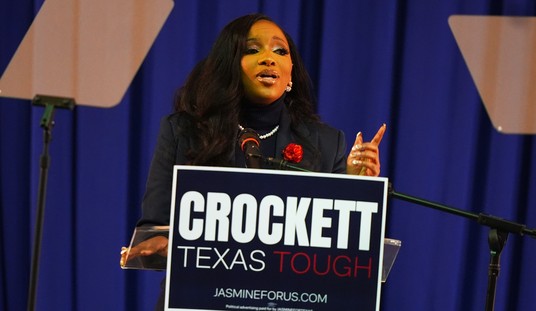“Drain the swamp.” It was one of President Trump’s most powerful messages on the way to victory. Shake up Washington. Break a few eggs to create a new omelet. Overturn the establishment.
Well, hats off to Senate Majority Leader Mitch McConnell for doing some swamp-draining when he exercised the “nuclear option” to overturn the filibuster for Supreme Court justices. McConnell busted an old 19th century rule, which was never in the Constitution, and cleared the path for the confirmation of Neil Gorsuch -- as good a candidate as can be found. Good for McConnell.
But let’s shift our swamp-draining focus to fiscal policy. Back in 1974, in the aftermath of Watergate, it was established that House and Senate budget committees would come together to pass a bill with something called “reconciliation instructions.” In this way, they would move a product through the committees that would only require 51 votes in the Senate to pass.
The process was allegedly designed to promote fiscal sanity, such as curbing the nation’s appetite for debt. Well, that didn’t work. Federal debt in public hands was about 23 percent of GDP back in the mid-1970s. Today it is about 77 percent of national income. Not much discipline there.
But the key problem with reconciliation is the highly flawed economic model used to score tax bills. Namely, the Congressional Budget Office (CBO) and the Joint Committee on Taxation (JCT) score tax relief as a revenue loser and tax increases as revenue gainers. Clearly, such modelling makes it very difficult to reduce marginal tax rates.
Recommended
And in recent years, this static modelling has led to the notion that tax cuts need a “pay-for.” If you don’t cut the budget enough, you don’t get your tax cut.
Almost weirdly, the scorekeepers are happy with tax hikes, allegedly to balance the budget. But tax hikes depress economic growth, which reduces GDP. And with a smaller income base, actual revenues decline, simply because most everybody is worse off.
In truth, the best way to balance the budget is to reduce tax rates and provide new incentives for faster growth, which then expands the income base and throws off more revenues.
In our book, JFK and the Reagan Revolution, Brian Domitrovic and I quote Democrat John F. Kennedy in his 1962 speech to the New York Economics Club. With high drama, JFK turned against the New Deal, saying, “it is a paradoxical truth that tax rates are too high today [91 percent top rate] and tax revenues too low, and the soundest way to raise revenues in the long run is to cut rates now. . . . The reason is that only full employment can balance the budget, and tax reduction can pave the way to that employment.”
Twenty years later, Republican Ronald Reagan duplicated the JFK tax cuts to liberate a stagflationary economy. Today, the JFK-Reagan approach would rescue a stagnant economy.
But the scorekeepers stand in the way. They’re part of the swamp. They’re telling President Trump you cannot lower tax rates without pay-fors.
So I’d say it’s time for a “tactical nuclear option inside reconciliation,” as playfully put by Wall Street Journal reporter Richard Rubin. Throw out the static models and replace them with dynamic scoring that recognizes the positive impact of lower tax-rate incentives on growth.
The CBO estimates real economic growth over the next ten years will continue to stagnate at a 1.8 percent annual pace. However, looking at history, we know that growth will increase with more take-home pay and handsome rewards for business.
How about a 3 percent growth rate over the next ten years? It’s still below America’s long-run average. But if you slash tax rates, particularly on large and small business, it is reasonable to assume more investment, new companies, profits, productivity, wages, and job creation.
Get this: According to former Senate budget expert Mike Solon, an economy growing at 3.1 percent per year would generate $4.5 trillion more revenues than an economy growing at 1.8 percent. $4.5 trillion. Now that’s a pay-for.
Growth is the best pay-for.
Turns out, under the rules of reconciliation, dynamic growth estimates are perfectly legal. Don’t even have to blow up a filibuster. And Dan Clifton of Strategas Research Partners points out that the Senate parliamentarian says it’s fine to use dynamic estimates. Why has Congress been using static forecasts all these years? Nothing more than a bizarre tradition.
So if Mike Enzi, chairman of the Senate Budget Committee, decides to use dynamic scoring, the Trump tax-cut proposals would sail through.
Reconciliation can be whatever you want it to be. It just takes a bit of bravery to buck tradition and drain the static-thinking economic swamp.
Give wage earners and the entire economy the rocket boost they so badly need.

























Join the conversation as a VIP Member